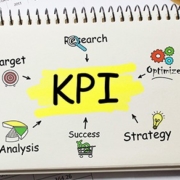Why you should run your nonprofit like a business
It’s a well-known truism in the corporate world: Organizations that don’t evolve run the risk of becoming obsolete. But instead of anticipating and reacting to market demands like their for-profit counterparts, many not-for-profits hold on to old ideas about how their organizations should be run. Here are a few things your nonprofit can learn from the business world.
Thinking strategically
The strategic plan — a map of near- and long-term goals and how to reach them — lies at the core of most for-profit companies. If your nonprofit doesn’t have a strategic plan or has been lax about revisiting and revising an existing plan, this should be a top priority.
Although the scope of your plan will be specific to the size and nature of your organization, basic principles apply to most. For example, you should set objectives for several time periods, such as one year, five years and 10 years out. Pay particular attention to each strategic goal’s return on investment. For example, consider the resources required to implement a new contact database relative to the time and money you’ll save in the future.
Spending differently
You probably already develop an annual budget, but how closely does it follow your strategic plan? For-profit businesses use budgets to support strategic priorities, putting greater resources behind higher priority projects.
Businesses also routinely carry debt on their balance sheets in the belief that it takes money to make money. Nonprofits, by contrast, typically avoid operating deficits. Unfortunately, it’s possible to operate so lean that you no longer meet your mission. Applying for a loan or even creating a for-profit subsidiary could provide your nonprofit with the funds to grow. Building up your endowment also may help provide the discretionary cash essential to pursue strategic opportunities.
Promoting transparency
Although nonprofits must disclose financial, operational and governance-related information on their Form 990s, public companies subject to the Sarbanes-Oxley Act and other regulations are held to higher standards. Consider going the extra mile to promote transparency.
If you don’t already, engage an outside expert to perform annual audits, and make your audited financial statements available upon request. Outside audits help assure stakeholders that your financial data is accurate and that you’re following correct accounting practices and internal controls.
We can help with your audit needs and assist you in adopting for-profit business practices that make sense given your organization’s needs. Contact us.
© 2019












